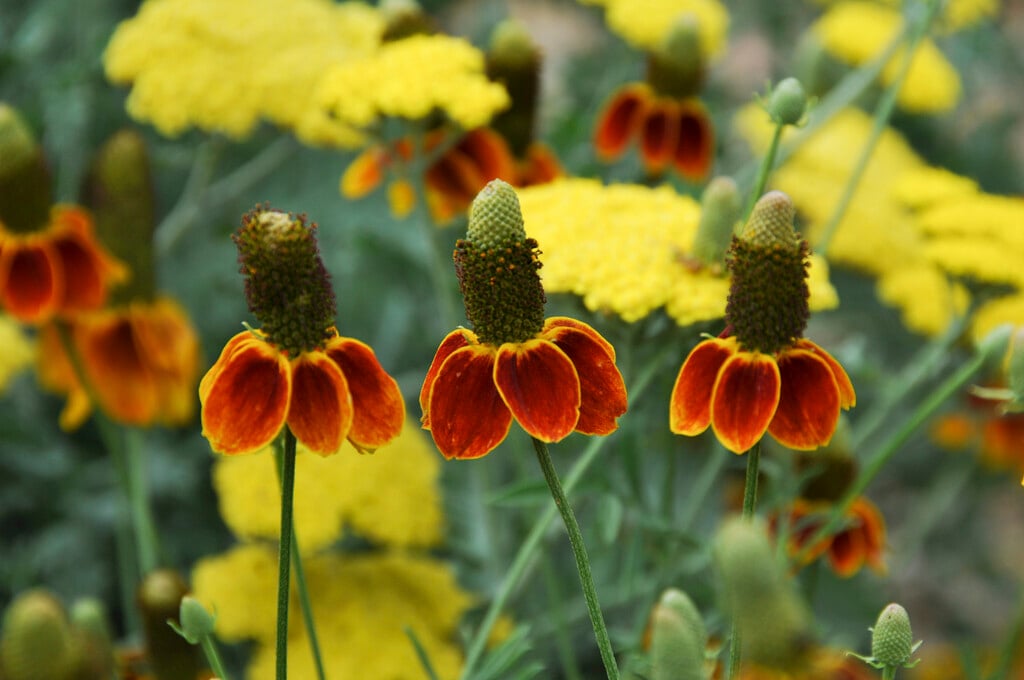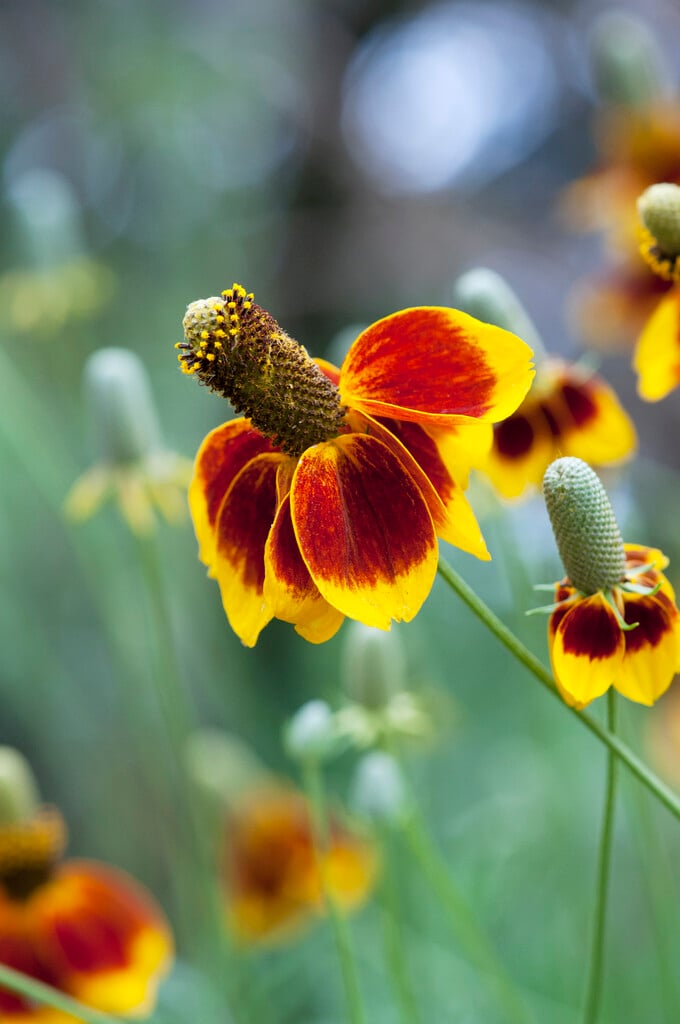Ratibida columnifera
upright prairie coneflower
An upright, clump-forming perennial to 80cm tall, with finely cut, feathery leaves. From early summer to early autumn, slender, branching stems bear daisy-like flowerheads to 8cm across, with drooping red or yellow (sometimes red and yellow) ray florets around a large, columnar cone
Synonyms
Ratibida columnarisSize
Ultimate height
0.5–1 metresTime to ultimate height
1–2 yearsUltimate spread
0.1–0.5 metresGrowing conditions
Moisture
Well–drainedpH
Alkaline, NeutralColour & scent
| Stem | Flower | Foliage | Fruit | |
| Spring | Green | |||
|---|---|---|---|---|
| Summer | Red Yellow | Green | ||
| Autumn | Red Yellow | Green | ||
| Winter |
Position
- Full sun
Aspect
South–facing or West–facing
Exposure
ShelteredDrought resistance
Yes Hardiness
H6Botanical details
- Family
- Asteraceae
- Native to GB / Ireland
- No
- Foliage
- Deciduous
- Habit
- Columnar upright
- Genus
Ratibida are biennials or perennials with erect stems developing from woody-based crowns. The flowers have colourful, outer ray florets and a tall, central boss of green, then brown, disc florets
- Name status
Correct
- Plant range
- S.W. Canada, W. and C. USA to New Mexico
How to grow
Cultivation
Grow in well-drained, neutral to slightly alkaline, moderately fertile soil in full sun. Drought resistant once established
Propagation
Propagate by seed or division
Suggested planting locations and garden types
- Cottage and informal garden
- Gravel garden
- Prairie planting
- Cut flowers
- Flower borders and beds
Pruning
No pruning required
Pests
Generally pest-free
Diseases
Generally disease-free
Love gardening
Sign up to receive regular gardening tips, inspiration, offers and more
View our Privacy Policy
Get involved
The Royal Horticultural Society is the UK’s leading gardening charity. We aim to enrich everyone’s life through plants, and make the UK a greener and more beautiful place.

